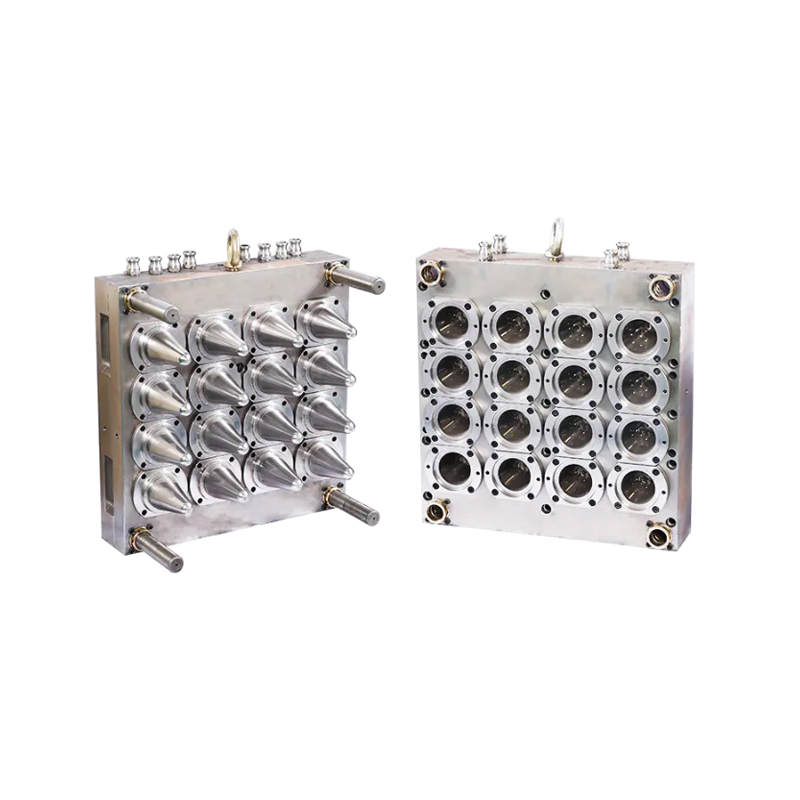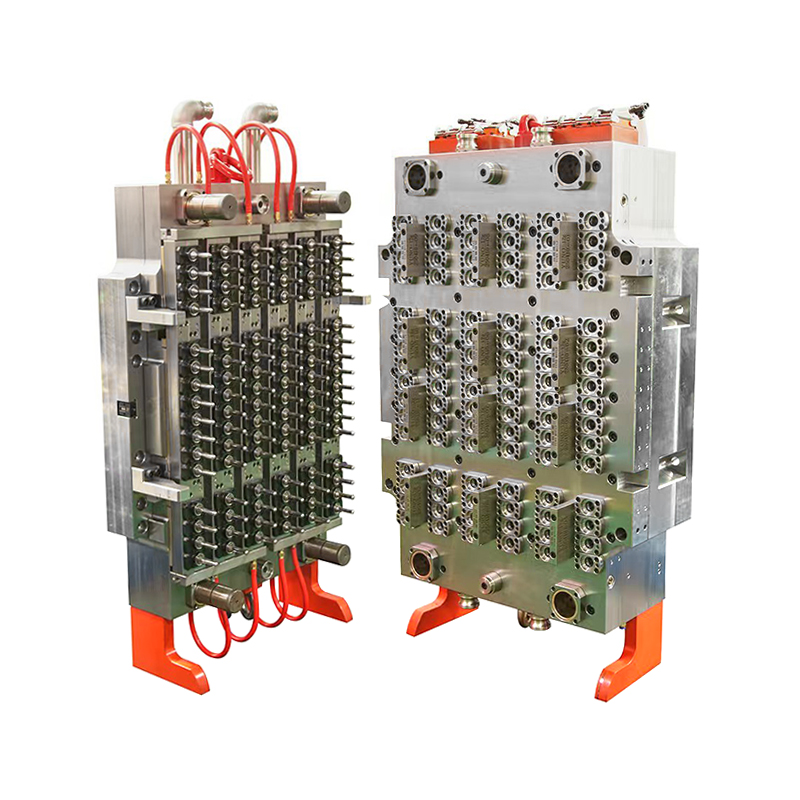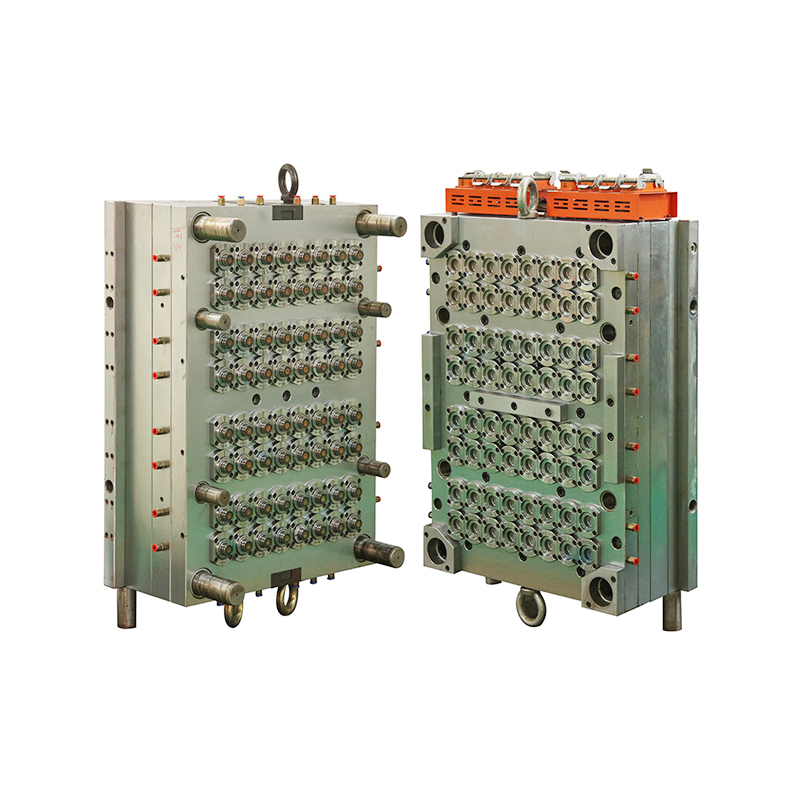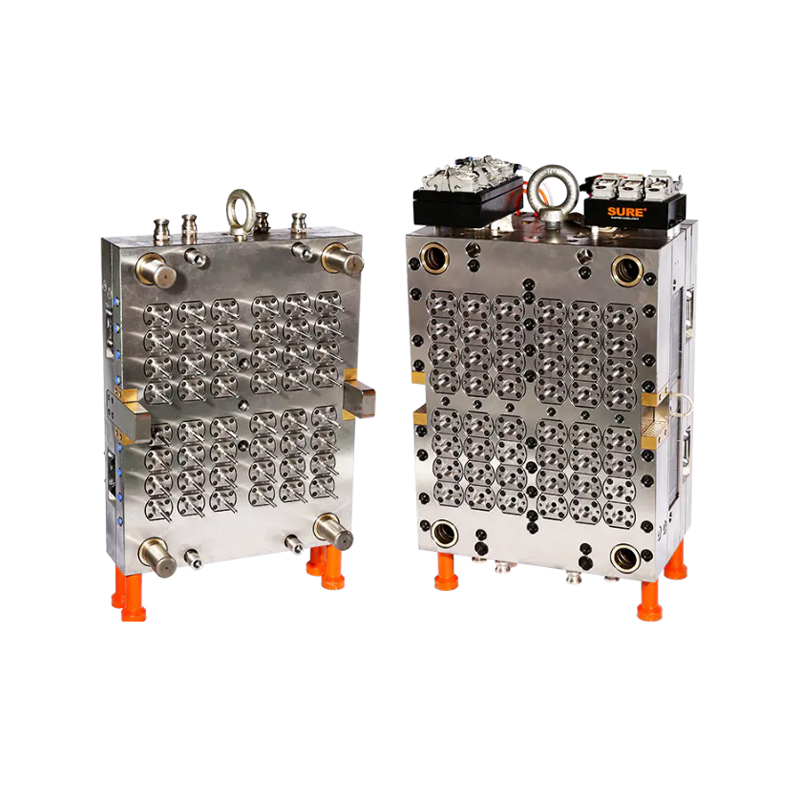No.148 Yongda Road, Jiangkou Street, Huangyan, Taizhou, Zhejiang, China.
The 16 Cavity Wide-Month Jar Preform Mould is rapidly becoming the workhorse of PET jar production lines around the world. Designed for high-volume output and engineered for durability, this mould is the critical link between raw PET resin and finished wide-mouth jars for food, beverage, cosmetics and household chemicals.
At its core, the 16 Cavity Wide-Month Jar Preform Mould is a hot-runner injection tool that produces sixteen identical preforms in a single shot. Each preform has a wide, straight neck finish—often 63 mm, 83 mm or 120 mm across—that later becomes the jar’s generous opening. By integrating sixteen cavities into one balanced manifold, the 16 Cavity Wide-Month Jar Preform Mould multiplies hourly output without multiplying floor space or labour. A typical cycle of 18–22 seconds delivers roughly 2,500 preforms per hour, a rate that single-cavity tools simply cannot match.
Material selection is the pillar of longevity. Good manufacturers machine the cavity and core inserts of the 16 Cavity Wide-Month Jar Preform Mould from S136 stainless steel hardened to HRC 48–52, guaranteeing corrosion resistance against PET’s acetic acid traces and maintaining optical polish after millions of shots. The mould base uses pre-hardened P20 or 718H to absorb clamping forces without distortion, while copper-beryllium cores in high-wear neck-ring areas dissipate heat quickly.

Hot-runner technology is the second pillar. A fully balanced, valve-gated hot runner eliminates cold sprues, reduces AA (acetaldehyde) levels, and shortens cycle time by 8–12 %. Each valve pin in the 16 Cavity Wide-Month Jar Preform Mould is individually actuated, allowing sequential injection to compensate for shear-induced viscosity differences. German Hotset heaters and PID controllers maintain melt temperature within ±1 °C, preventing haze and stress-whitening in the final jar. Because the 16 Cavity Wide-Month Jar Preform Mould uses a wide-mouth neck-ring module, operators can swap neck finishes in under thirty minutes, giving converters the flexibility to switch from 63 mm pickle jars to 83 mm coffee jars on the same shift.
Cooling efficiency is the often-overlooked third pillar. Spiral water channels milled directly beneath each cavity remove heat twice as fast as conventional drilled lines, driving cycle times down to 16 seconds on high-speed presses. In trials conducted by Demark Machinery, a 16 Cavity Wide-Month Jar Preform Mould fitted with conformal cooling reduced energy consumption by 11 % and cut scrap from 2.3 % to 0.7 % compared to an older drilled-line tool.
For day-to-day operation, processors should treat the 16 Cavity Wide-Month Jar Preform Mould as a precision instrument rather than a commodity part. Daily SPC checks on preform weight, length and gate vestige will flag heater degradation or valve-pin wear before quality drifts. Monthly ultrasonic cleaning of the hot-runner manifold prevents carbonised PET from blocking flow channels. A disciplined greasing schedule—high-temperature lithium complex on pins every 8,000 cycles and food-grade silicone on neck splits every 4,000 cycles—extends the service life of the 16 Cavity Wide-Month Jar Preform Mould well past five million shots.
Sustainability is now a decisive factor. Because the 16 Cavity Wide-Month Jar Preform Mould eliminates cold sprue waste, converters save roughly 3–4 % on PET resin, translating to 1.2 t of resin saved per million jars. When paired with rPET, the mould’s uniform wall distribution supports up to 100 % recycled content without compromising drop-impact strength. Several European co-packers have qualified the 16 Cavity Wide-Month Jar Preform Mould for food-grade rPET streams, meeting EFSA migration limits and brand-owner sustainability pledges.


 英语
英语 法语
法语

















